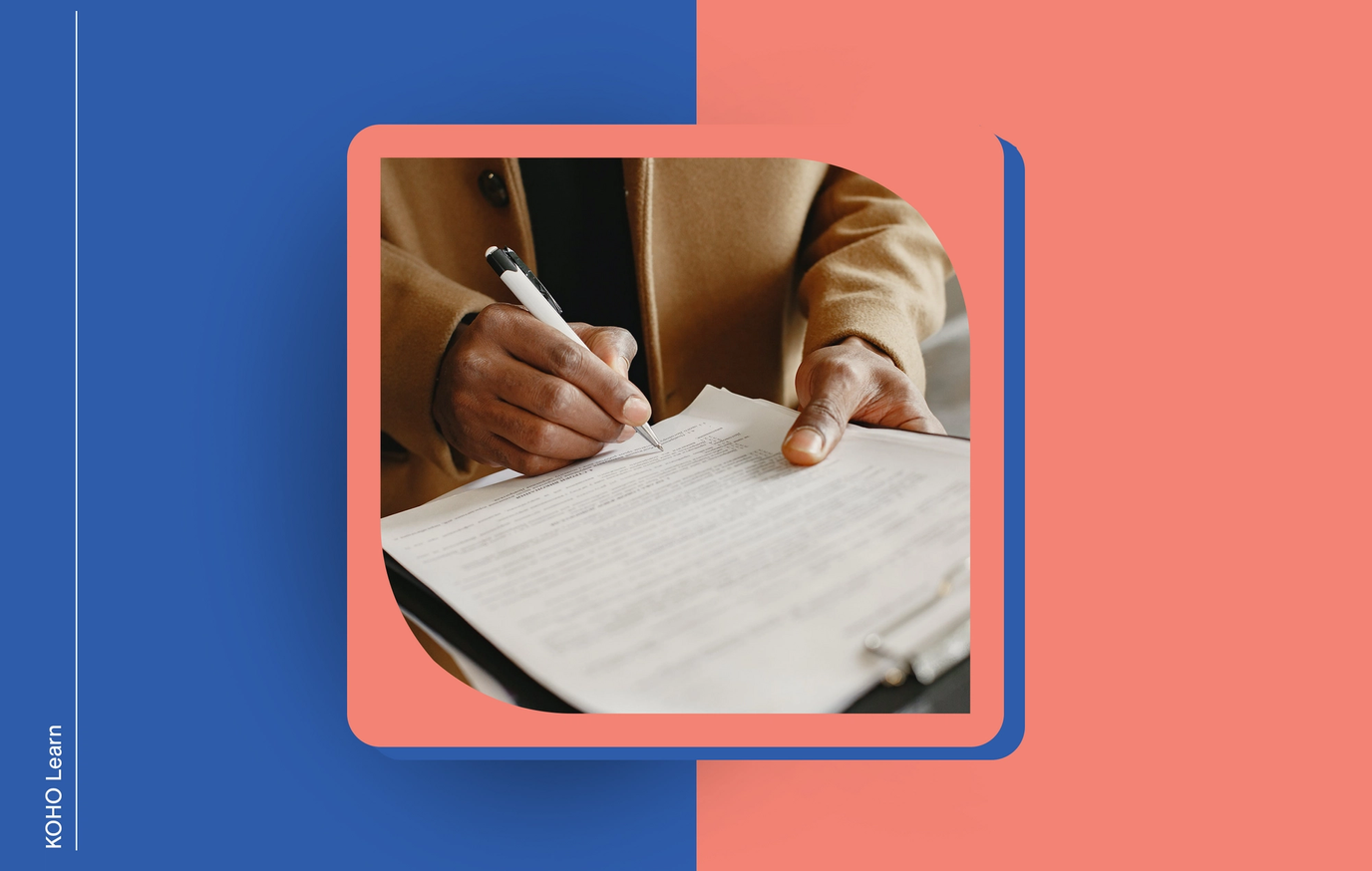
Rounding it up
A credit limit is the maximum amount you can spend on a credit card; they exist to reduce the risk of lending to you
Credit limits are determined by many things, including credit score, employment history, and income
You can increase your limit by improving these factors and by requesting an increase; continually exceeding your limit can lead to negative consequences
KOHO offers credit card-style rewards with chequing accounts
There are limits to everything. You can only drive so fast on the highway. You can only run so fast. And, as you may know, you can only spend so much money on a credit card. Credit limits may seem arbitrary to you and me but to banks and card issuers, they are law. They’re the amount that underwriters and complex algorithms calculate that you’ll be able to repay.
There are lots of reasons why issuers have credit limits. Likewise, there are plenty of reasons why credit limits are beneficial to consumers. Credit limits can be increased for consumers with high credit scores and solid repayment histories. This allows you to capitalize on many of the benefits credit card issuers offer that normal bank cards may not.
Let’s take a look at the purpose of credit limits, how you can work with them, some other limits that exist, and outline some of the benefits that come along with higher limits. While we’re at it, we’ll look at a certain financial services company (*ahem* KOHO) that offers credit card-style rewards with chequing accounts.
What is a credit limit?
A credit limit is the maximum amount you can spend on a credit card. They exist to serve as a way for lenders to limit the amount of money you can borrow from them. Credit limits are determined by a whole host of different factors and the algorithms used to determine such limits are often proprietary to the issuing company. Generally speaking, however, credit card issuers will look at a few key indicators to determine your credit limit.
Credit Score
Your credit score is a numerical representation of the risk of lending to you. Credit scores are developed by the two major credit bureaus in Canada: Equifax and TransUnion. Scores are calculated from various elements on your credit report.
Payment history: how good you are at repaying your loan obligations on time. This element is often split into 30-, 60-, and 90-day increments and is considered the most important factor influencing your credit score.
Credit card utilization: simply, how much of your available credit you’re using. If you have access to $1,000 in credit and you’re using $500, you’re at a 50% utilization rate. It’s important to keep this percentage relatively low, but not absolutely zero. You want to show that you can handle managing your credit.
Credit history: how long you’ve had credit accounts. This shows that you’re able to handle having credit over the course of many years. This is why it’s important not to close your oldest credit card accounts, even if you don’t use them anymore.
Credit mix: a healthy report includes some combination of auto loans, mortgages, personal loans, student loans, and revolving credit or accounts like credit cards. Lenders want to see that you can pay back a variety of different types of credit.
Recent credit: not the most important but a consideration is how recently you’ve applied for credit. When you go get a new loan or credit card, the company will conduct a hard pull on your report. Opening multiple accounts or making large loan purchases like a car or home can drag your score down.
All of these elements are converted into numbers and calculated to create your score. Lenders may also apply their own algorithms to the credit reports and scores they receive from credit bureaus depending on their desired risk tolerance.
You can get a free credit report from TransUnion and Equifax through the Canadian Government. If you want your score, you’ll have to get it from one of the bureaus specifically and you may have to pay for it. Many financial institutions and credit card companies now offer free credit scores to their customers. KOHO users who subscribe to Credit Building can also view their credit scores whenever they’d like, while also building their credit history.
Risk tolerance
We touched on this above but, basically, different companies have different customers they try to target. For example, a company that has the majority of their business with high-income earners may lower the credit limit of an individual that has a lower credit score. This has a lot to do with company operations, so there really isn’t a view into how this process works.
Your income
This goes without saying; when you apply for a credit card or apply for a credit limit increase (more on this below), you’ll have to report how much you make and any additional payments you may make in alimony or child support. If your income is less, a lender will perhaps rightly assume that you won’t be able to repay as much.
Employment status
If you hold a full time job, with a history of consistent paycheques, you’re likely to have a higher credit limit than if you have part-time or gig employment. Lenders, above all other things, are seeking consistency and job security.
Where can I find my credit limit?
Credit card issuers make it very easy to find your credit limit so that you’re fully informed on the amount you can spend. The best way to view your limit is to log in to the card issuer’s website and review the dashboard or front page. It’s likely listed near the top or near your current or statement balance. Additionally, if you receive paper statements, your credit limit will appear near the top of the notice. Finally, you can find your credit limit on your credit report listed with each account. It’s actually important to check this because it’s possible that your credit card issuer is not reporting the correct credit limit to bureaus. This can unnecessarily lower your credit score.
Is there anything I can do to increase my credit limit?
Sure is. First, you can simply ask! This is done most simply by visiting your card issuer’s website and finding the option to request a credit line increase. The automated process will often ask why you want or need additional credit and then respond appropriately. You may get instant approval or you may have to wait for your request to be reviewed by an actual person. If you’re turned down, you’ll often be told what influenced the decision. It's important to ensure you have your financial house in order before you request a credit line increase. If you’ve not been paying your bills on time or have just received a card, it may not be the best idea to request an increase.
Whether you decide to ask or not, there are a few things you can do to increase your chances of receiving a credit limit increase.
Credit score: raising your credit score by paying on time, ensuring you have a good mix of loan options, and closely monitoring the age of your credit can help entice lenders to increase your limits.
Money: making more money will hep a great deal; the more money you have available, the more you can repay
Cosign: you may not have the best credit history, but perhaps your spouse or partner does. Consider a cosigner to help you increase the chances you’ll receive a higher limit.
Can I exceed my credit card limit?
This depends on the credit card. Some credit card companies may allow you to complete a purchase that takes you over your limit but shut off additional purchases until a payment is made to bring your balance back below your credit limit. This could, however, subject you to fees and even higher interest rates. Many credit card companies will reject any amount that gets close to your credit limit outright. If you regularly exceed your credit limit and are repaying the amount, consider a credit line increase (or, even better, take a close look at your budget). If you are failing to pay, you should look closely at your spending to determine why you’re piling on the debt.
Are there other limits for credit cards?
The most common limit we hear about are credit card limits. However, all loan products have limits and all have the same exact purpose as credit card limits: to limit the risk of default to the lender. Some limits may be more apparent than others. For example, there are limits to how much a bank or financial institution will lend to you for a mortgage for a home. Interestingly, however, the mortgage issuer may provide you with more money than you can actually repay. For example, a bank may pre-approve you for a $500,000 mortgage, but when you look at your financial situation, you may not be able to afford the payment that comes along with that much house.
This is because you don’t have to repay a mortgage all at once or quickly like you would a credit card. Additionally, the company is not looking at the other costs that come with owning a home, including maintenance, taxes, and insurance. It’s important that you look closely at your financial situation to determine how much you can actually afford to borrow.
Credit card rewards
One of the main reasons folks love using credit cards is for the benefits that come along with them. This includes purchase protection and, most importantly, reward points. Most chequing accounts don’t offer this kind of reward system, but guess what? KOHO does. With KOHO’s free essential account, enjoy 1% cash back on groceries, bills, and services, along with no account fees. Want 2% cash back at a bunch of places and additional benefits, too? KOHO’s Extra account is the way to go and also offers price matching, financial coaching, and free international ATM withdrawals.
Final thoughts on the purpose of credit limits
The purpose of credit limits is for credit card issuers to limit their risk of you defaulting on your debt. They want to ensure they get repaid. You can always request a credit line increase, just ensure that your financial situation enables you to handle additional debt. A well-informed budget is always the best place to start.

About the author
Dan is a runner and writer living in the Washington, D.C. area, where he currently works for a financial services trade association as the Communications Director.
Read more about this author